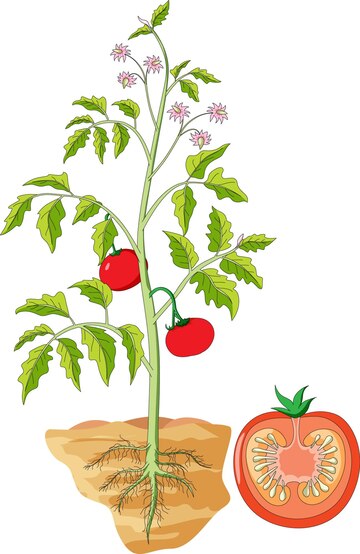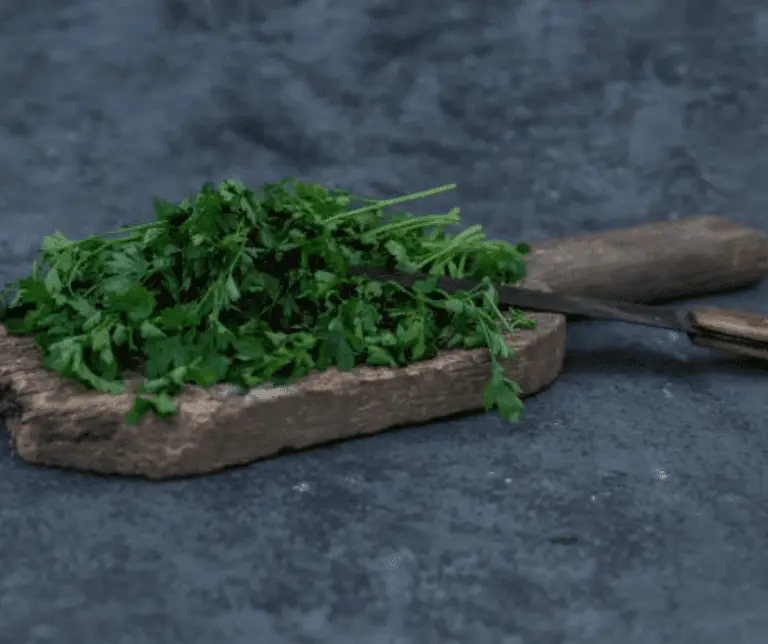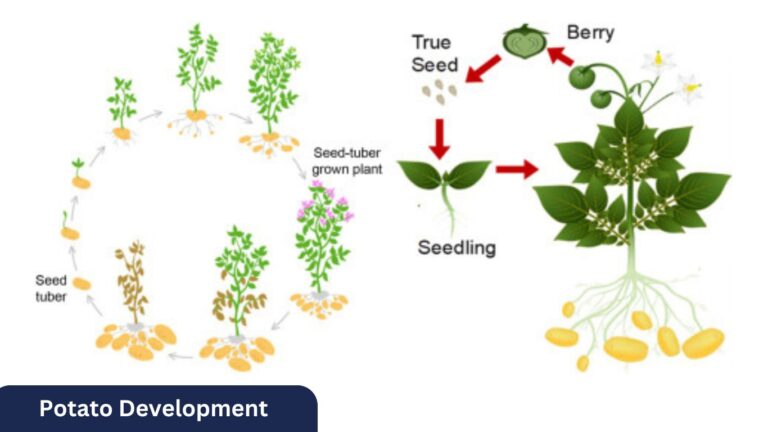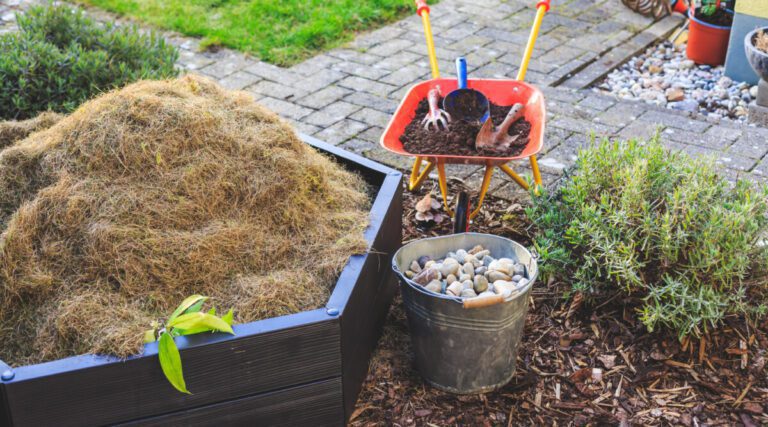Verticillium Wilt: The Best Wide-Ranging Plant Pathogen
Table of Contents
Resistant Varieties: Selecting Plants with Genetic Resistance to Verticillium Wilt
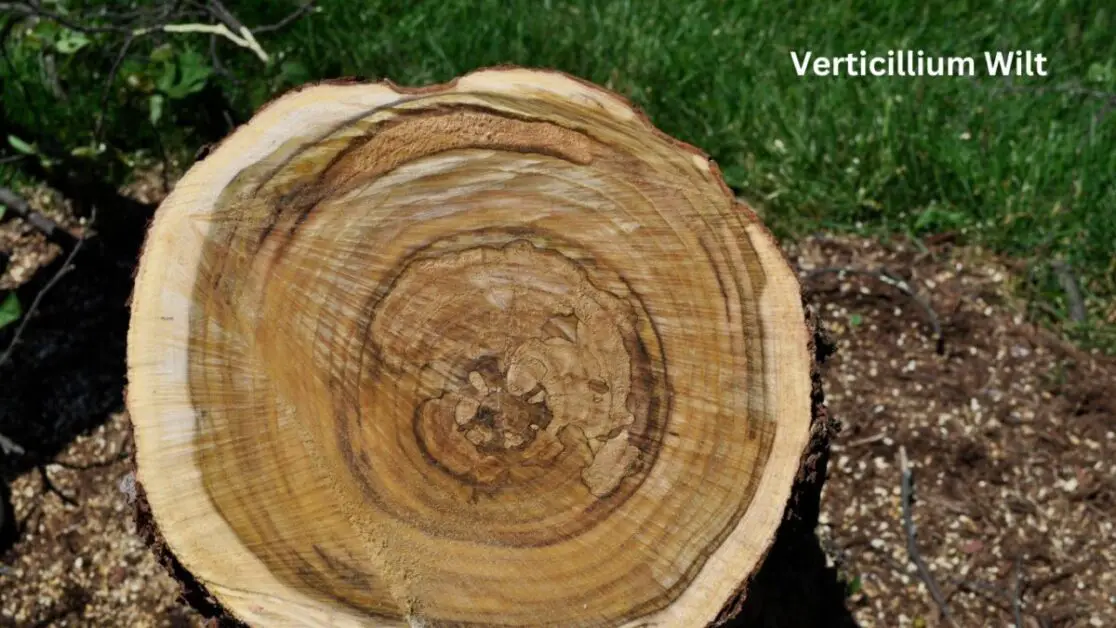
Plants affected by Verticillium wilt can suffer significant damage, leading to reduced yields and even plant death. However, selecting resistant varieties can be an effective strategy for managing this devastating disease. Resistant varieties possess genetic traits that enable them to withstand infection and limit the impact of Verticillium wilt. By incorporating these plants into your garden or crop production system, you can reduce the risk of disease outbreaks and ensure the health and productivity of your plants.
When choosing resistant varieties, it is essential to consider the specific pathogenic strain of Verticillium wilt that is prevalent in your region. Different strains of the fungus may have variations in their virulence and ability to infect certain plant species. Therefore, it is crucial to select resistant varieties that are specifically bred to combat the predominant strain in your area. Collaborating with local agricultural extension services, seed suppliers, or plant breeders can provide valuable insights into the suitable resistant varieties for your region. By aligning your selection with the specific pathogenic strain, you can maximize the effectiveness of genetic resistance and enhance disease management strategies in your garden or field.
Selecting plants with genetic resistance to Verticillium Wilt can be an effective strategy in managing the disease.
Here are some examples of crop varieties that have been bred or selected for resistance to Verticillium Wilt:
- Tomatoes:
- ‘Mountain Magic’: This tomato variety is known for its resistance to several diseases, including Verticillium Wilt. It produces high yields of flavorful, crack-resistant fruit and is suitable for both commercial and home gardeners.
- ‘Defiant’: Another tomato variety with resistance to Verticillium Wilt, ‘Defiant’ produces medium-sized, round fruits with good flavor. It is well-suited for fresh consumption and processing.
- Cotton:
- ‘Acala NemX’: This cotton variety has been bred for resistance to Verticillium Wilt and nematodes. It is known for its high fiber quality and yield potential, making it a popular choice among cotton growers in regions where Verticillium Wilt is a significant concern.
- Strawberries:
- ‘Chandler’: While not completely immune to Verticillium Wilt, ‘Chandler’ strawberries exhibit some level of resistance to the disease compared to other varieties. It is a widely grown cultivar known for its large, sweet berries and high yields.
- Potatoes:
- ‘Russet Burbank’: This potato variety is known for its moderate resistance to Verticillium Wilt, along with resistance to other diseases such as late blight. ‘Russet Burbank’ is a popular cultivar for its large, oblong tubers that are well-suited for baking and processing.
- Olive Trees:
- ‘Arbequina’: While no olive cultivar is completely immune to Verticillium Wilt, ‘Arbequina’ is known for its tolerance to the disease. It is a highly productive variety with small, flavorful olives, making it a preferred choice for olive oil production in regions where Verticillium Wilt is prevalent.
When selecting resistant varieties, it’s essential to consider factors such as local environmental conditions, disease pressure, and agronomic traits desired for the specific crop and growing region. Additionally, incorporating diverse management practices such as crop rotation and soil sanitation can further enhance the effectiveness of genetic resistance in controlling Verticillium Wilt.
Integrated Pest Management: An Holistic Approach to Verticillium Wilt Management
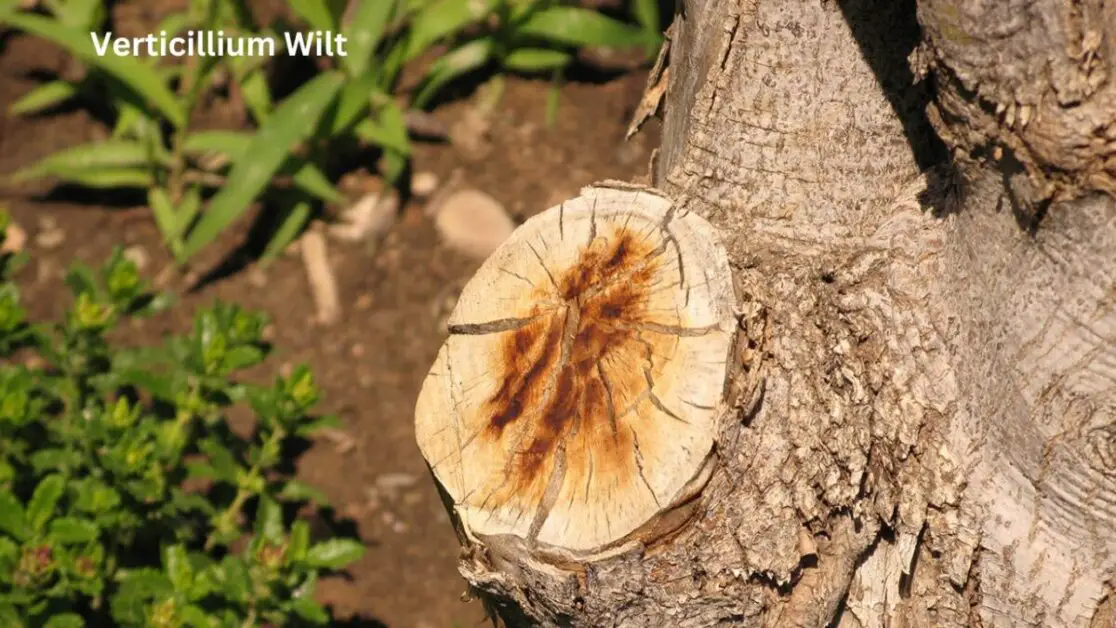
Integrated Pest Management (IPM) is a comprehensive, holistic approach to managing Verticillium that aims to minimize the use of chemical pesticides while maintaining optimal plant health. This strategy focuses on prevention, monitoring, and control techniques to reduce the impact of this devastating fungal disease on crops and plants.
One of the primary elements of IPM for Verticillium wilt management is cultural practices. These practices include crop rotation, selection of resistant plant varieties, and maintaining healthy soils. Crop rotation is crucial as it helps break the disease cycle by reducing the pathogen population in the soil. By rotating crops, such as alternating susceptible plants with non-host crops, the likelihood of Verticillium wilt reoccurring in subsequent seasons can be decreased. Additionally, choosing resistant plant varieties is another effective method. Resistant varieties have a genetic advantage that allows them to withstand or minimize infection from the Verticillium wilt pathogen. By selecting resistant varieties, growers can significantly reduce the likelihood or severity of disease outbreak, leading to healthier plants and higher yields.
Implementing IPM practices also involves proper monitoring and scouting techniques. Regular field observations and inspections can help detect early signs of Verticillium wilt infestation, allowing for timely intervention. Monitoring can include visual inspection for wilting, leaf discoloration, and other symptoms, as well as laboratory testing to confirm disease presence. By identifying the disease’s presence early on, growers can take immediate action, such as targeted chemical treatments or the implementation of additional preventative measures, to limit the disease’s spread and minimize its impact on the crop.
Adopting an integrated pest management approach provides a comprehensive and sustainable solution for managing Verticillium wilt. By combining cultural practices, resistant plant varieties, and vigilant monitoring, growers can effectively control this fungal disease while reducing reliance on chemical pesticides. With the goal of long-term crop health and productivity, IPM serves as a valuable tool for gardening enthusiasts and professionals alike.
here’s a basic table about Verticillium:
| Aspect | Description |
|---|---|
| Name | Verticillium Wilt |
| Pathogen | Verticillium spp. (primarily V. dahliae and V. albo-atrum) |
| Hosts | Numerous plant species including tomatoes, potatoes, strawberries, etc. |
| Symptoms | Yellowing, wilting, stunted growth, vascular discoloration |
| Transmission | Soilborne, enters through roots or wounds |
| Management | Crop rotation, resistant cultivars, soil sterilization, fungicides |
| Economic Impact | Significant losses in agriculture, especially in susceptible crops |
| Geographic Distribution | Worldwide, prevalent in temperate regions |
This table provides an overview of Verticillium Wilt, including its name, causal pathogens, affected hosts, symptoms, transmission methods, management strategies, economic impact, and geographic distribution.
here’s a Another basic table about Verticillium Wilt:
| Aspect | Description |
|---|---|
| Name | Verticillium Wilt |
| Causal Agent | Verticillium species (e.g., V. dahliae, V. albo-atrum) |
| Host Plants | Various crops, ornamentals, and trees including tomatoes, potatoes, cotton |
| Symptoms | Yellowing and wilting of leaves, stunted growth, vascular discoloration |
| Transmission | Soilborne, enters through roots or wounds |
| Management | Crop rotation, soil sterilization, resistant cultivars, fungicides |
| Economic Impact | Significant yield losses in agriculture, affecting crop productivity |
| Geographic Distribution | Worldwide, prevalent in temperate regions |
This table provides a basic overview of Verticillium Wilt, including its name, causal agents, affected host plants, symptoms, transmission methods, management strategies, economic impact, and geographic distribution.
Case Studies: Real-Life Examples of Vert
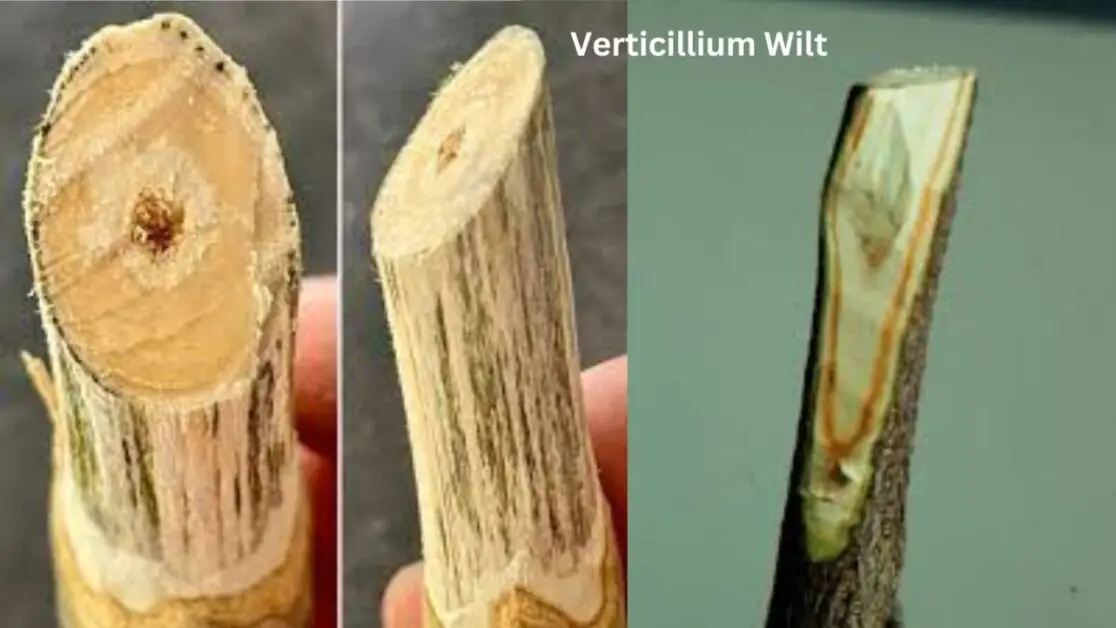
Verticillium wilt is a serious plant disease that affects a wide range of cultivated plants, including tomatoes, potatoes, strawberries, and many ornamentals. In order to better understand the impact of this disease and the various management strategies employed by growers, let’s delve into a couple of real-life case studies.
One such case study involves a tomato production facility in California, where Verticillium wilt became a recurring issue. The growers decided to adopt an integrated pest management (IPM) approach, combining cultural, biological, and chemical control methods. Through careful crop rotation, they minimized the risk of disease transmission by avoiding planting susceptible crops in the same field year after year. Additionally, they implemented a proactive scouting program to quickly identify any signs of the disease and take necessary action. This included the use of resistant tomato varieties, such as ‘Iron Lady,’ that have genetic resistance to the Vert wilt pathogen. In combination with the judicious use of fungicides, this holistic approach significantly reduced disease incidence and crop losses.
In another case study, a strawberry farm in Oregon faced a severe outbreak of Vert wilt. The farmers decided to tackle the issue by employing resistant varieties that had been specifically bred to withstand the disease. By selecting cultivars like ‘Hood’ and ‘Albion’ with high resistance ratings, the farmers were able to significantly reduce the impact of the disease on their crop. Coupled with proper sanitation practices, such as cleaning tools between beds and removing infected plants, they effectively managed the disease and maintained healthy strawberry production.
These real-life examples highlight the importance of selecting and utilizing resistant plant varieties as a key component in the management of Verticillium wilt. By adopting a comprehensive approach that combines resistant cultivars with other cultural and chemical control methods, growers can effectively mitigate the impact of this devastating disease on their crops.
Certainly, here’s a case study of a strawberry farm in Oregon facing a severe outbreak of Verticillium Wilt:
Case Study: Verticillium Wilt Outbreak on a Strawberry Farm in Oregon
Background:
Oregon is known for its vibrant strawberry industry, with numerous farms producing high-quality berries for both local and export markets. However, like many regions worldwide, Oregon’s strawberry growers face challenges from various diseases, including Verticillium Wilt.
The Outbreak:
In a strawberry farm located in Oregon’s Willamette Valley, a severe outbreak of Verticillium Wilt occurred, causing significant losses in strawberry production. The farm had been cultivating strawberries for several years, but Verticillium Wilt had never been a major issue until this outbreak.
Symptoms and Impact:
The first signs of Verticillium Wilt appeared as yellowing and wilting of the strawberry plants’ lower leaves. As the disease progressed, entire plants began to wilt and die prematurely, leading to a substantial reduction in fruit yield and quality. The farm experienced a decline in production and revenue, posing a significant threat to its economic viability.
Management Strategies:
The farm implemented several management strategies to mitigate the impact of Verticillium Wilt and prevent future outbreaks:
- Crop Rotation: The farm adopted a crop rotation plan, avoiding planting strawberries in fields where Verticillium Wilt had been prevalent in previous seasons. Instead, they rotated to crops less susceptible to the disease, such as legumes or grasses, to break the disease cycle.
- Soil Sterilization: In severely affected fields, the farm employed soil sterilization techniques to reduce the population of Verticillium spp. This involved solarization, fumigation, or steam treatment of the soil to kill pathogenic fungi and other soilborne pathogens.
- Resistant Cultivars: The farm researched and introduced strawberry cultivars with enhanced resistance or tolerance to Verticillium Wilt. By planting resistant varieties, they aimed to minimize the impact of the disease on crop health and yield.
- Fungicide Application: As a supplementary measure, the farm applied fungicides registered for the control of Verticillium Wilt according to recommended guidelines. Fungicide treatments targeted both soilborne and foliar pathogens to protect the strawberry plants from infection and reduce disease spread.
Outcome:
Through the adoption of integrated disease management practices, including crop rotation, soil sterilization, cultivation of resistant cultivars, and judicious use of fungicides, the strawberry farm in Oregon successfully managed the Verticillium Wilt outbreak. Over time, the incidence and severity of the disease decreased, allowing the farm to restore strawberry production and regain profitability.
The outcome of the management strategies implemented by the strawberry farm in Oregon was largely positive. By employing a combination of cultural, chemical, and genetic approaches, the farm successfully managed the Verticillium Wilt outbreak and mitigated its impact on strawberry production. Some specific outcomes include:
- Reduced Disease Incidence: The incidence and severity of Verticillium Wilt decreased over time due to the implementation of crop rotation and soil sterilization practices. By avoiding planting strawberries in fields where the pathogen was prevalent and reducing the population of Verticillium spp. in the soil, the farm minimized the risk of disease establishment and spread.
- Restored Production: With the implementation of disease management measures, strawberry production on the farm gradually recovered. The decline in plant health and fruit yield associated with Verticillium Wilt was mitigated, allowing the farm to resume normal operations and meet market demands for strawberries.
- Improved Economic Viability: The successful management of Verticillium Wilt contributed to the farm’s economic viability and sustainability. By preventing significant losses in strawberry production and revenue, the farm maintained its profitability and continued to contribute to the local agricultural economy.
- Enhanced Resilience: Through the experience of dealing with the Verticillium Wilt outbreak, the farm gained valuable knowledge and skills in disease management. This increased resilience to future disease challenges, as the farm could apply lessons learned and adapt management strategies to address other potential threats to strawberry cultivation.
Overall, the outcome of managing the Verticillium Wilt outbreak on the strawberry farm in Oregon demonstrates the effectiveness of integrated disease management approaches in controlling plant diseases and ensuring the long-term sustainability of agricultural production.
Lessons Learned:
The Verticillium Wilt outbreak served as a valuable learning experience for the strawberry farm, highlighting the importance of proactive disease management and the implementation of diverse control measures. By integrating cultural, chemical, and genetic approaches, growers can effectively manage Verticillium Wilt and sustainably protect their crops from devastating losses.
Here are a couple of real-life examples of Vert Wilt affecting crops:
- Potato Crops in Idaho, USA: Verticillium Wilt has been a recurring issue in potato crops in Idaho, one of the major potato-producing regions in the United States. The fungus Verticillium dahliae can persist in the soil for several years, making it particularly challenging to manage. In susceptible potato cultivars, the disease can cause significant yield losses and affect tuber quality. Farmers in Idaho have implemented various management strategies such as crop rotation, soil fumigation, and the use of resistant cultivars to mitigate the impact of Vert Wilt on potato production.
- Olive Trees in Spain: Spain is one of the world’s leading producers of olives and olive oil. Vert Wilt, caused by Verticillium dahliae, poses a threat to olive tree cultivation in various regions of Spain. The disease can lead to wilting, decline, and eventual death of olive trees, impacting both yield and quality of olive oil production. Researchers and growers in Spain have been studying the disease epidemiology, developing resistant olive cultivars, and implementing cultural practices to manage Vert Wilt effectively and sustainably in olive orchards.
These case studies highlight the significant economic and agricultural impact of Verticillium Wilt on various crops and the efforts undertaken by farmers, researchers, and industry stakeholders to address the challenges posed by this disease.
What is Verticillium wilt?
Verticillium wilt is a fungal disease that affects a wide range of plants, causing wilting, yellowing, and stunted growth.
How can I prevent Verticillium wilt in my plants?
One way to prevent Verticillium wilt is by selecting plants with genetic resistance to the disease.
What are resistant varieties?
Resistant varieties are plants that have been bred or genetically modified to have a higher tolerance or immunity to specific diseases, such as Verticillium wilt.
How can I identify plants with genetic resistance to Vert wilt?
You can identify plants with genetic resistance to Verticillium wilt by consulting with local nurseries, agricultural extension offices, or conducting research online for specific plant varieties known to have resistance.
What is Integrated Pest Management (IPM)?
Integrated Pest Management (IPM) is an approach to pest and disease management that considers the use of multiple strategies, including cultural, biological, and chemical methods, to control pests and diseases in a holistic and environmentally friendly manner.
How can IPM be applied to manage Vert wilt?
IPM can be applied to manage Verticillium wilt by implementing cultural practices like crop rotation, soil solarization, and sanitation, as well as using biological controls and targeted chemical treatments when necessary.
Can you provide some real-life examples of Vert wilt management?
Yes, here are a few real-life examples of Verticillium wilt management strategies:
1. Crop rotation: Farmers rotate susceptible crops with non-host plants to break the disease cycle.
2. Soil solarization: The soil is covered with a transparent plastic sheet and heated by the sun to kill soilborne pathogens, including Verticillium wilt.
3. Biological controls: Beneficial microorganisms or fungi are introduced into the soil to suppress Verticillium wilt.
4. Fumigation: In severe cases, fumigants may be used to eradicate the pathogen from the soil, but this is a last resort due to environmental concerns.
Is Verticillium wilt contagious to other plants?
Yes, Verticillium wilt can spread to other susceptible plants through infected soil, contaminated tools, or by insect vectors.
Can Verticillium wilt be cured once a plant is infected?
Unfortunately, there is no cure for Verticillium wilt once a plant is infected. The focus should be on prevention and management strategies to minimize the disease’s impact.
Are there any alternative methods to control Verticillium wilt without using chemicals?
Yes, cultural practices such as crop rotation, soil solarization, and the use of resistant plant varieties are effective methods to control Verticillium wilt without relying on chemical treatments.



